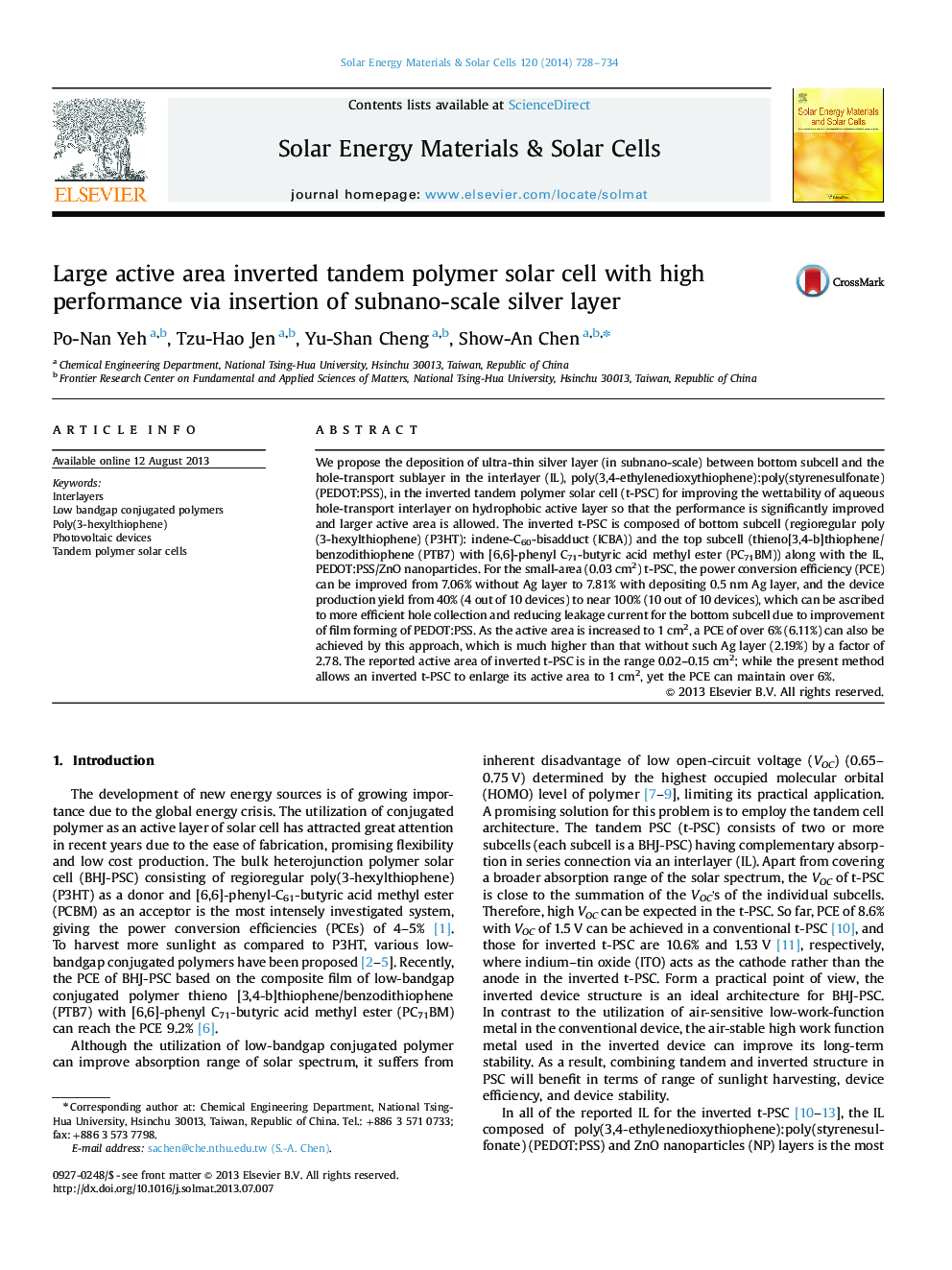| Article ID | Journal | Published Year | Pages | File Type |
|---|---|---|---|---|
| 78191 | Solar Energy Materials and Solar Cells | 2014 | 7 Pages |
•High quality PEDOT:PSS film can form on the Au or Ag-treated P3HT:ICBA surface.•Insertion of Ag layer between PEDOT:PSS and P3HT:ICBA can increase PSC efficiency.•The production yield can be improved from 40 % to near 100 % for Ag layer.•A PCE of 6.11% can be obtained in a 1 cm2 inverted tandem PSC.
We propose the deposition of ultra-thin silver layer (in subnano-scale) between bottom subcell and the hole-transport sublayer in the interlayer (IL), poly(3,4-ethylenedioxythiophene):poly(styrenesulfonate) (PEDOT:PSS), in the inverted tandem polymer solar cell (t-PSC) for improving the wettability of aqueous hole-transport interlayer on hydrophobic active layer so that the performance is significantly improved and larger active area is allowed. The inverted t-PSC is composed of bottom subcell (regioregular poly(3-hexylthiophene) (P3HT): indene-C60-bisadduct (ICBA)) and the top subcell (thieno[3,4-b]thiophene/benzodithiophene (PTB7) with [6,6]-phenyl C71-butyric acid methyl ester (PC71BM)) along with the IL, PEDOT:PSS/ZnO nanoparticles. For the small-area (0.03 cm2) t-PSC, the power conversion efficiency (PCE) can be improved from 7.06% without Ag layer to 7.81% with depositing 0.5 nm Ag layer, and the device production yield from 40% (4 out of 10 devices) to near 100% (10 out of 10 devices), which can be ascribed to more efficient hole collection and reducing leakage current for the bottom subcell due to improvement of film forming of PEDOT:PSS. As the active area is increased to 1 cm2, a PCE of over 6% (6.11%) can also be achieved by this approach, which is much higher than that without such Ag layer (2.19%) by a factor of 2.78. The reported active area of inverted t-PSC is in the range 0.02–0.15 cm2; while the present method allows an inverted t-PSC to enlarge its active area to 1 cm2, yet the PCE can maintain over 6%.
Graphical abstractThe thermal evaporation of ultra-thin Ag layer (in subnano-scale) between bottom subcell and hole-transport interlayer poly(3,4-ethylenedioxythiophene):poly(styrenesulfonate) (PEDOT:PSS) in the inverted tandem polymer solar cell (t-PSC) is proposed to improve wettability of aqueous PEDOT:PSS on hydrophobic active layer and facilitate the fabrication of large-area (>1 cm2) t-PSC with high efficiency of 6.11%.Figure optionsDownload full-size imageDownload as PowerPoint slide
